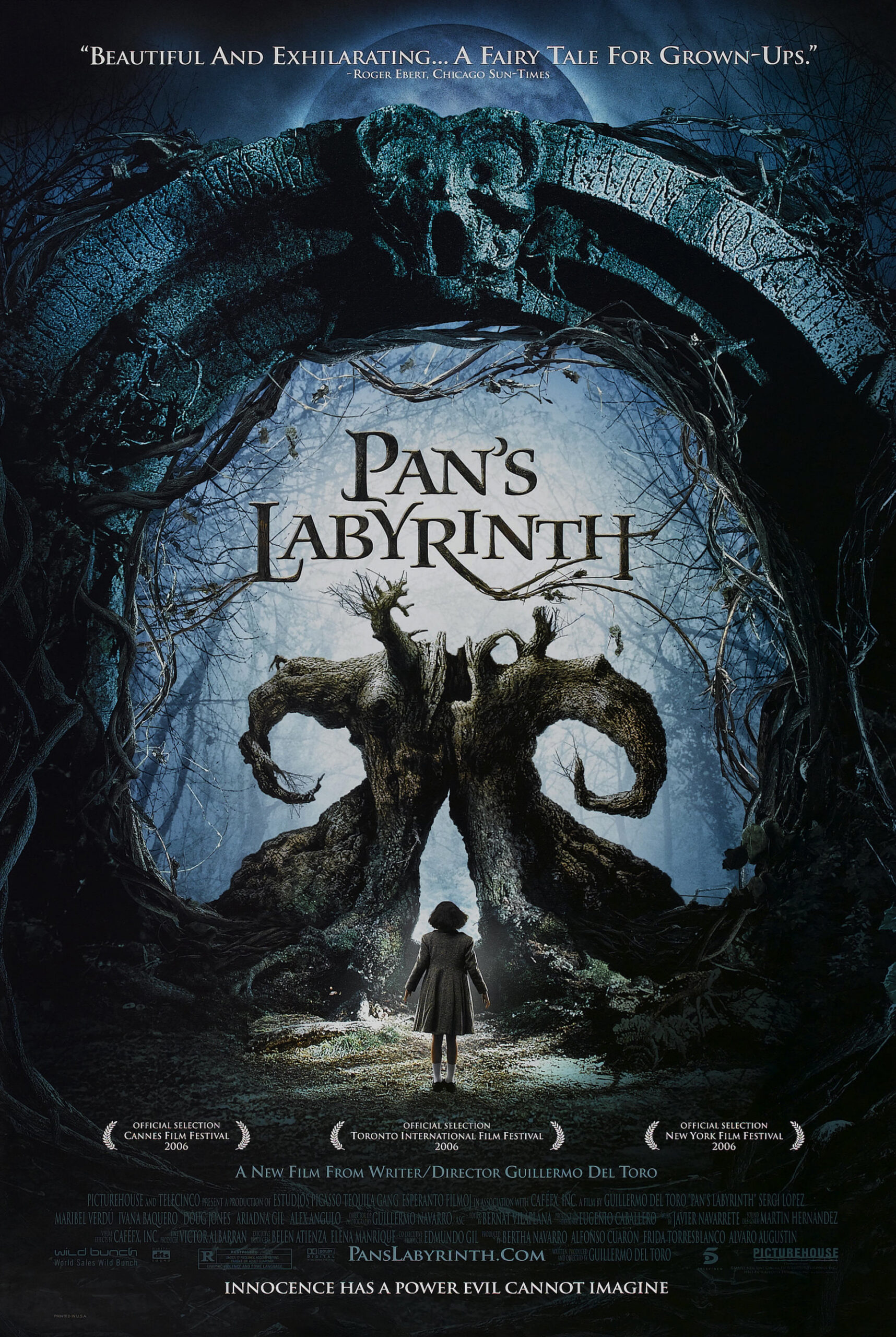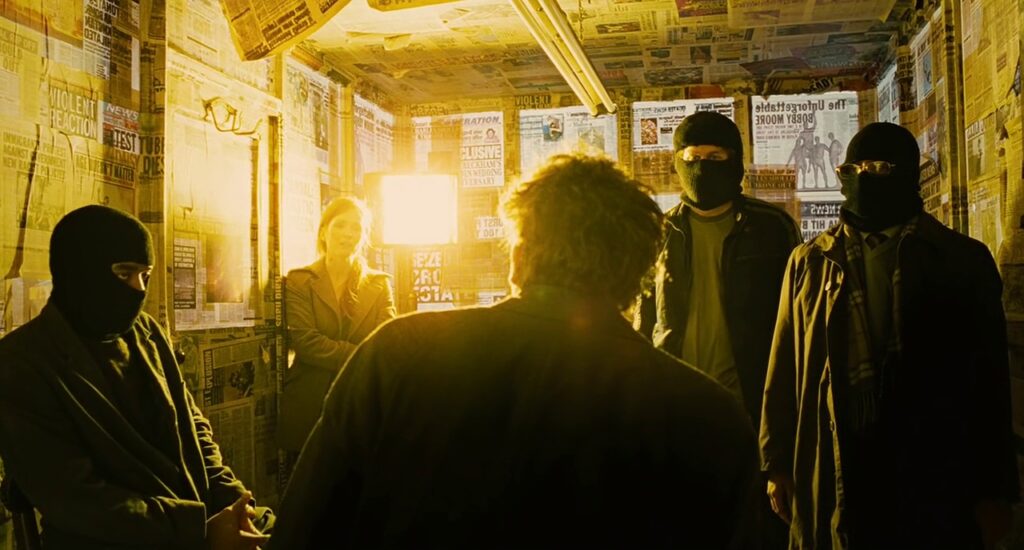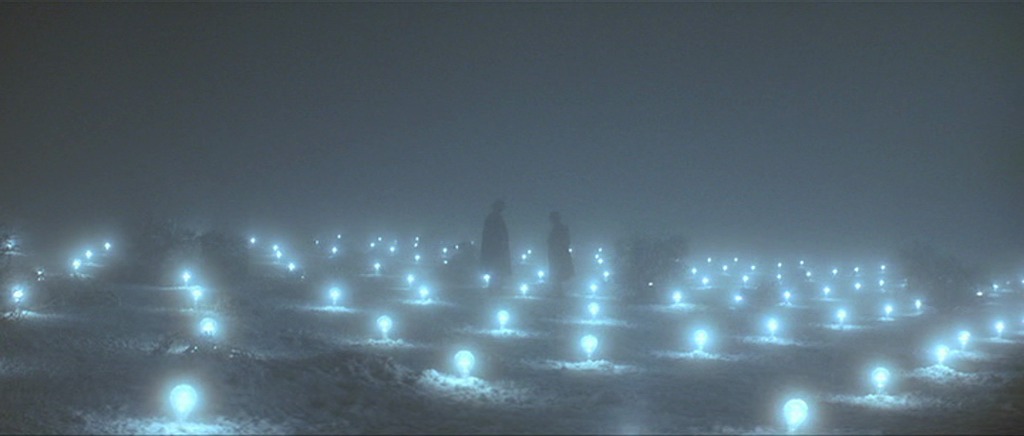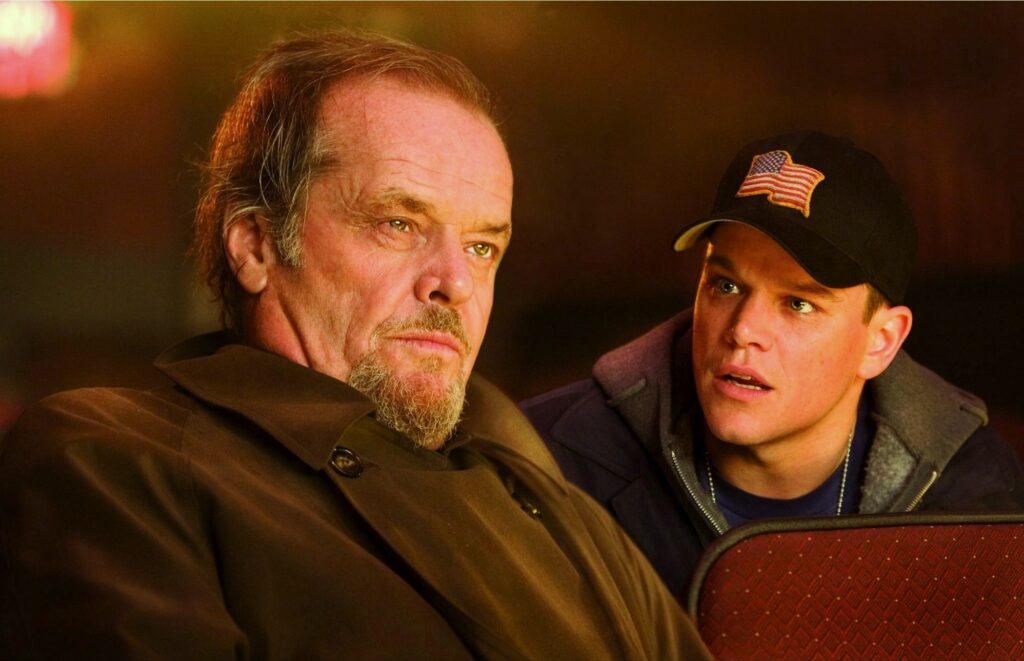“Pan’s Labyrinth” (2006): A Mesmerizing Fusion of Reality and Fantasy – Film Review

Guillermo del Toro’s “Pan’s Labyrinth,” released in 2006, is a masterful blend of dark fantasy and historical drama, set against the backdrop of post-Civil War Spain. The film weaves a haunting narrative that explores themes of innocence, brutality, and escapism, making it a landmark in cinematic storytelling.
The Story’s Heart: Innocence Amidst Brutality
At the core of “Pan’s Labyrinth” is the poignant tale of Ofelia (Ivana Baquero), a young girl who, amidst the harsh realities of her war-torn surroundings, finds solace and challenge in a mythical world. Del Toro crafts a narrative that skillfully parallels the grim realities of Ofelia’s life under her tyrannical stepfather, Captain Vidal (Sergi López), with the fantastical quests assigned to her by the enigmatic faun (Doug Jones).
The film’s narrative is a delicate balance between the grim post-war reality and the captivating fantasy world. This juxtaposition serves as a profound commentary on the nature of belief, innocence, and the escapism provided by stories, especially in times of adversity.
Behind the Scenes: Crafting the World of “Pan’s Labyrinth”
Del Toro’s vision for “Pan’s Labyrinth” was brought to life through meticulous production design, innovative special effects, and profound storytelling. The director’s well-known fascination with fairy tales and monsters deeply influenced the film’s aesthetic, resulting in a world that is both terrifying and enchanting.
The creation of the film’s mythical creatures, especially the Pale Man and the Faun, involved a combination of prosthetics, puppetry, and CGI. Doug Jones, who played both roles, underwent extensive makeup and prosthetics application sessions, sometimes lasting up to five hours. His performances were enhanced with minimal CGI to preserve the physicality and authenticity of the characters.
The sets and locations were carefully chosen and designed to reflect the dual nature of Ofelia’s journey. The old mill where Ofelia and her mother live with Captain Vidal is both a realistic and oppressive space, mirroring the grim reality of their lives. In contrast, the labyrinth and the faun’s domain are depicted with a surreal beauty that underscores the allure and danger of Ofelia’s fantasy world.
Cinematography and Visuals: A Window to Dual Realities
The cinematography by Guillermo Navarro plays a crucial role in “Pan’s Labyrinth,” with color palettes and lighting distinguishing the stark reality from the vibrant fantasy segments. The real world is often shown in cold, muted tones, reflecting the harshness and brutality of Ofelia’s life, while the fantasy elements burst with rich, warm colors, highlighting the contrast between the two realms.
Thematic Depth: War, Innocence, and Escapism
“Pan’s Labyrinth” delves into the impact of war on the human psyche, particularly through the eyes of a child. The film explores how the innocence of youth copes with the cruelties of reality, often finding refuge in a fantastical world. Yet, del Toro doesn’t allow this escape to be purely fantastical; he intertwines it with the narrative’s darker themes, such as the corrupting influence of power, the resilience of the human spirit, and the blurred lines between reality and fantasy.
Performance and Character Development
The performances in “Pan’s Labyrinth” are universally compelling. Ivana Baquero’s portrayal of Ofelia is both grounded and ethereal, capturing the essence of a child caught between two worlds. Sergi López’s Captain Vidal is chillingly effective, embodying the brutal authoritarianism of the era. The supporting cast, including Maribel Verdú as the sympathetic housekeeper Mercedes and Doug Jones’ portrayal of the mystical creatures, add depth and nuance to the narrative.
Symbolism and Allegory: The Soul of “Pan’s Labyrinth”
Del Toro’s use of symbolism in “Pan’s Labyrinth” is intricate, with each element of the fantasy world reflecting or contrasting with aspects of the real world. The labyrinth itself is a central motif, representing Ofelia’s journey and the complex choices and challenges she faces. It serves as a metaphor for life’s intricate and often perplexing journey, filled with decisions that lead to various paths and outcomes.
The characters Ofelia encounters in her quests, from the menacing Pale Man to the ambiguous Faun, are laden with allegorical significance. The Pale Man, with his grotesque appearance and eerie behavior, symbolizes the devouring nature of totalitarian regimes, consuming the innocent without remorse. The Faun, neither wholly good nor evil, embodies the ambiguous nature of folklore and myth, challenging Ofelia’s (and the audience’s) perceptions of right and wrong.
Production Nuances: Crafting a Dark Fairy Tale
The production of “Pan’s Labyrinth” was an endeavor of passion and creativity for del Toro. The director’s hands-on approach in designing the creatures and sets ensured that every detail contributed to the film’s immersive experience. Del Toro’s notebooks, filled with sketches and notes, became the blueprint for the film’s visual and thematic design.
The collaboration with cinematographer Guillermo Navarro and art director Eugenio Caballero was pivotal in bringing del Toro’s vision to the screen. The blend of practical effects, animatronics, and CGI created a seamless and tactile fantasy world, crucial for the film’s authenticity and emotional impact. The practical effects, especially, allowed the actors to interact more naturally with their surroundings and the fantastical beings they encountered.
Sound and Music: Enhancing the Narrative Tapestry
The sound design and score of “Pan’s Labyrinth,” composed by Javier Navarrete, are integral to the film’s atmosphere. The music, with its haunting lullabies and stirring orchestral pieces, enhances the narrative’s emotional depth and the fantastical elements. The sound design, meticulous in its detail, further blurs the line between reality and fantasy, enriching the viewer’s immersion into Ofelia’s world.
Critical Acclaim and Retrospective Appreciation
Upon its release, “Pan’s Labyrinth” was hailed for its originality, emotional depth, and technical excellence. Critics praised del Toro’s storytelling and the seamless integration of the film’s historical and fantastical elements. Over time, its critical standing has only grown, with many considering it one of the best films of the 21st century.
The film’s ability to resonate with audiences across different cultures and age groups speaks to its universal themes and the timeless appeal of fairy tales. “Pan’s Labyrinth” has been analyzed and interpreted in various ways, from its commentary on fascism and war to its exploration of childhood, resilience, and the power of imagination.
“Pan’s Labyrinth” stands as a testament to Guillermo del Toro’s vision and his ability to craft a story that is both personally resonant and universally relevant. The film’s enduring legacy lies in its capacity to meld the harsh realities of history with the boundless possibilities of fantasy, creating a cinematic experience that is both thought-provoking and deeply moving. In “Pan’s Labyrinth,” del Toro has not only made a film that entertains but also one that challenges, comforts, and enlightens, solidifying its place in the pantheon of great cinema.




